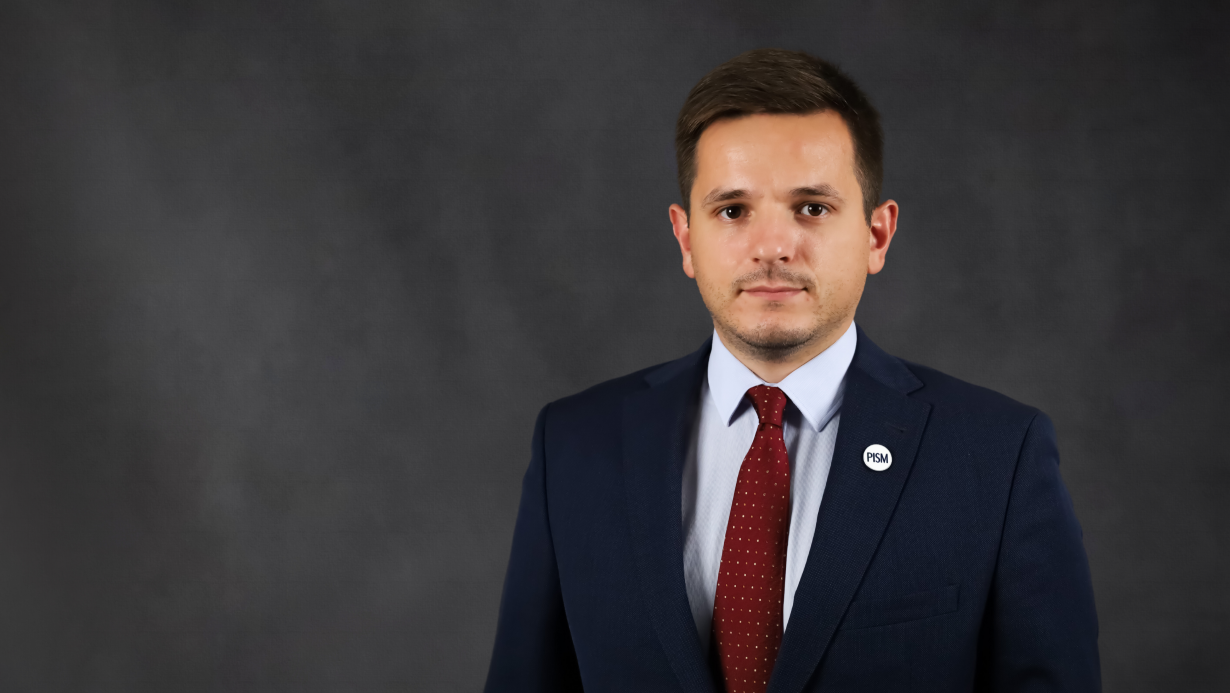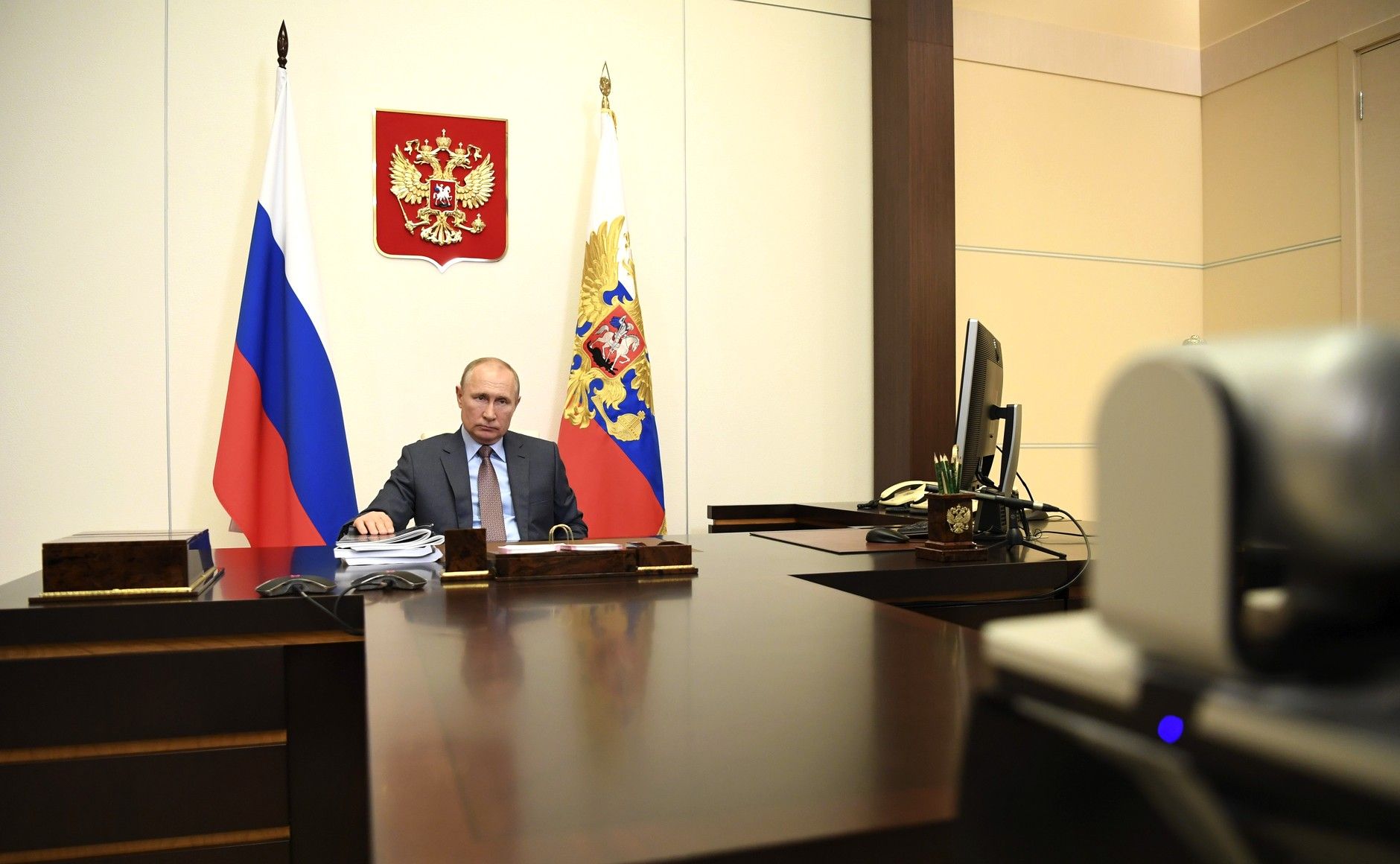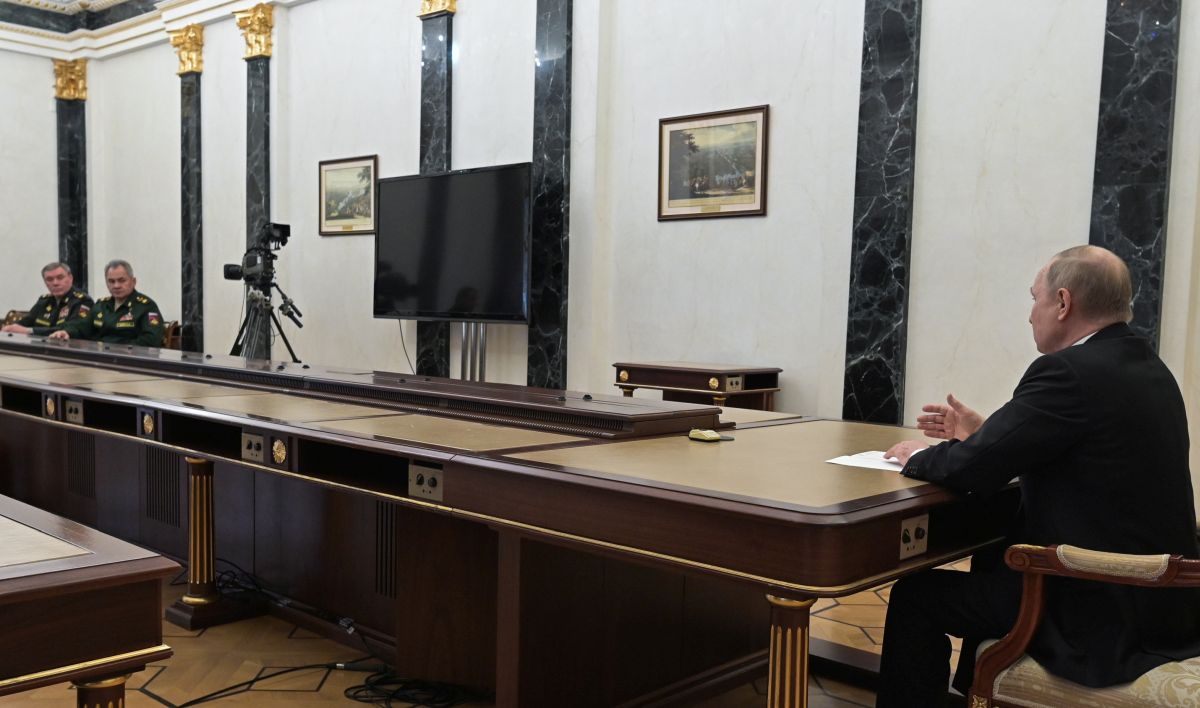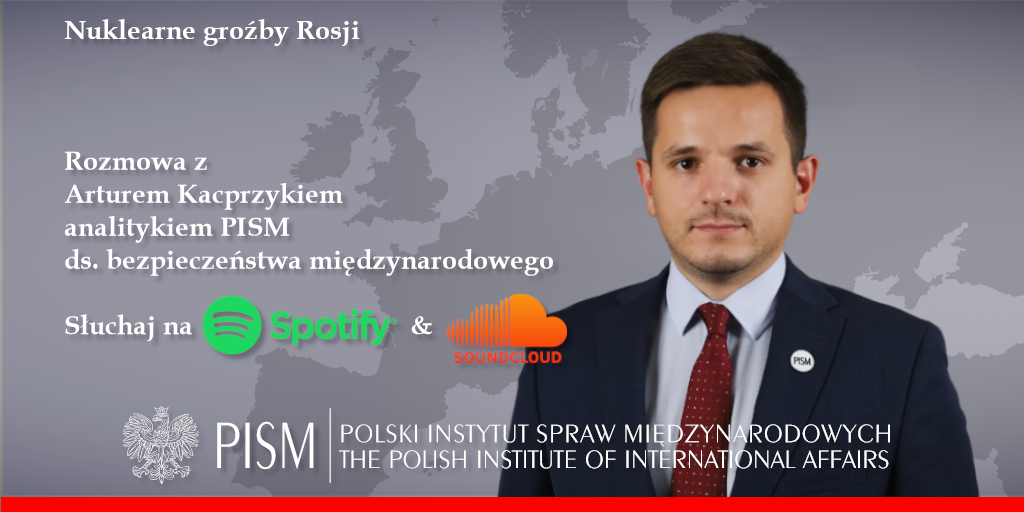Changes in Russia's Nuclear Rhetoric
On 28 March, Dmitry Peskov, the press secretary for Vladimir Putin, ruled out the use of nuclear weapons during the Russian invasion of Ukraine. This apparent softening of rhetoric regarding nuclear weapons does not mean, however, that Russia will stop using nuclear threats. Russia’s aim is still to maintain ambiguity regarding the actual threshold for use of nuclear weapons. While the danger of nuclear escalation would be real in the event of a NATO-Russia conflict, both NATO and Russia want to avoid such a development. The Russian threats should therefore not stop the West from increasing arms deliveries to Ukraine and imposing further sanctions.
 SHAMIL ZHUMATOV/ Reuters/ FORUM
SHAMIL ZHUMATOV/ Reuters/ FORUM
How do Peskov’s remarks relate to Putin’s earlier threats?
In an interview with the American news outlet PBS, Peskov said that any outcome of the invasion of Ukraine will not be a reason for Russia to use nuclear weapons and that it is not being considered. Similar to an interview he gave to CNN on 22 March, he referred to Putin’s 2020 decree called the “Basic Principles of State Policy of the Russian Federation on Nuclear Deterrence”. Peskov stated that Russia’s policy allows for nuclear use only in case of a threat to the existence of the state, although he did not clarify it further, and that the “special military operation” against Ukraine has nothing to do with such a threat.
However, this is at odds with what Putin himself said. In his televised address on the day the invasion was launched (24 February), he used the term “existential threat” to describe NATO’s enlargement and the military cooperation of its members with Ukraine. While Peskov reminded that Putin had warned other countries not to “interfere” in the conflict, the Kremlin spokesman denied that it had been a nuclear threat. Putin, though, clearly referred to it, as he threatened third countries with consequences they “have never seen”, bragged about Russia’s nuclear arsenal, and, on 27 February, ordered Russian nuclear forces on “a special mode of combat service”. Putin’s threat from 5 March was also a reference to nuclear arms. He said that the imposition of a no-fly zone over Ukraine would “bring catastrophic results not only to Europe, but to the whole world”.
What has former President Dmitry Medvedev said recently about nuclear weapons?
In an interview for RIA Novosti published on 26 March, Dmitry Medvedev, the deputy chairman of the Security Council of the Russian Federation and former president of Russia, argued that Russia is not threatening anybody and recalled the scenarios from Putin’s 2020 decree on nuclear deterrence in which Russia reserves the right to use nuclear weapons. He listed a nuclear strike on Russia with missiles (the decree mentions even just the launch of any ballistic missiles against it) or any other use of nuclear weapons against Russia and its allies (the document also mentions attacks with other weapons of mass destruction), an attack that paralyses Russia’s nuclear forces, or aggression with the use of conventional weapons that threatens the existence of the Russian state.
Medvedev also assessed that the increase in the readiness of Russia’s nuclear forces “cooled down” the efforts of Poland and other American allies, as the U.S. did not agree to implement a no-fly zone over Ukraine and what he called other “stupid ideas”. He also argued that tensions between Russia and U.S./NATO are even worse than during the Cold War. In a social media post on 23 March, Medvedev accused the U.S. of pursuing a policy aimed at the division and destruction of Russia. He ensured that Russia will not let that happen, but also warned that political and economic destabilisation of Russia (especially a break up) would increase the risk of nuclear war.
What might be behind the softening and ambiguity of the Russian nuclear statements?
That Russia is not reaching for more direct nuclear threats than those issued at the beginning of the invasion, and seems to have even softened its nuclear rhetoric, might be a result of concluding that its main goal—deterring NATO from armed intervention on Ukraine’s side—was fulfilled. The Russian threats could have a limited impact on other forms of Western support for Ukraine. They have not prevented the imposition of severe sanctions on Russia nor on the increase of arms deliveries to Ukraine, although they could have had an impact on limiting the types of delivered systems. Russia could be calculating that creating an impression of de-escalation is now a better way of convincing Western states not to undertake additional actions. The easing of the nuclear rhetoric coincides with Russia’s declarations on limiting the scope of military operations in Ukraine and demands during peace talks.
The statements by Russian officials and contents of its strategic documents leave room for interpretation big enough to enable both attempts to preserve the appearance of defensive conduct for global public opinion and uncertainty regarding the actual threshold of nuclear use. They are ambiguous enough to allow trying to justify an escalation of threats, if necessary. This pertains especially to the use of the term “existential threat” in relation to Ukraine and its military cooperation with the West. It is also noteworthy that Russia has been accusing Ukraine of possessing chemical and biological weapons, while official Russian policy cites their use as a possible trigger for a nuclear response.
What could cause Russia to escalate its nuclear threats?
New threats could take the form of direct statements towards NATO countries and/or Ukraine and changes in the posture of Russian nuclear forces (e.g., places of their deployment). An increase in such threats is possible in case of an announcement or commencement of deliveries of additional and advanced weapon systems to Ukraine. On 29 March, the Russian defence ministry broadly warned that it would react “adequately” if fighter jets or air defence systems are to be transferred to Ukraine. Intensified Russian nuclear signalling may also occur if sanctions are tightened (cited by Putin when he ordered the increase in the nuclear readiness). Conducting actual nuclear strikes is not realistic in either case, however. The use of force, particularly nuclear weapons, against NATO would run counter to the main goal of the Russian nuclear threats during the ongoing attack on Ukraine, which is to prevent NATO from joining the conflict. It would also risk deepening Russia’s economic isolation.
It cannot be excluded that Putin will threaten a limited nuclear attack on Ukraine in order to try to coerce it to quickly end the war, although conducting such an attack is unlikely because it would risk severe effects on Russian forces and territory, as well as a sharp toughening of the international response to the Russian aggression, including additional sanctions. It would also totally discredit Russia’s conventional capabilities. The mobilisation of additional forces and signals that Russia is limiting the scope of its operations in Ukraine indicate a preference for keeping the war non-nuclear.
What does this mean for NATO deterrence policy?
It would be harmful for NATO if Russia concluded that its nuclear threats could paralyse the Alliance’s response if a member is attacked. The decision not to intervene on Ukraine’s side was taken even before the Russian invasion and stemmed first and foremost from the fact that Ukraine is not a NATO member, although concerns about an escalation of the conflict with Russia to nuclear war also played a role. The allies would have a much greater interest in defending NATO members. By attacking any of them, Russia would be taking an incomparably greater risk than in attacking Ukraine, which is not covered by Article 5 guarantees. Reminding Russia of this may require stronger communication on nuclear issues by NATO and its members, for example, in the upcoming release of the Alliance’s new strategic concept. Such communication should be addressed not only to Russia but also to the publics of NATO member states, as they are the target of such threats, along with their governments.
At the same time, NATO countries should not be concerned about Russia resorting to nuclear arms in response to an increase in the scale and scope of arms deliveries to Ukraine or a toughening of sanctions. While Russia may threaten nuclear retaliation for such actions, actually conducting such an attack would run counter to Russian efforts not to involve NATO in the ongoing war. For the Eastern Flank countries, including Poland, the increased forward military presence of the U.S. and other allies comprises an important instrument reminding Russia of the risks related to potential aggressive actions against these states.





